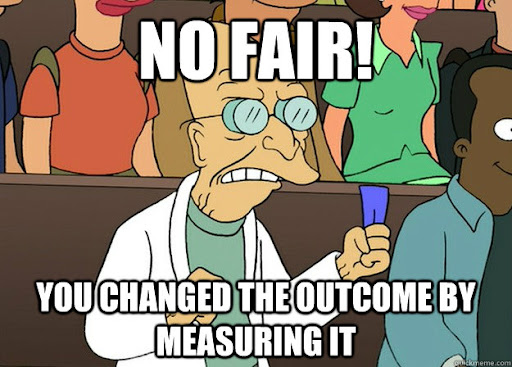AFib patients using wearable devices are more likely to engage in high rates of symptom monitoring and experience anxiety than non-users, a study shows.

AFib patients using wearable devices are more likely to engage in high rates of symptom monitoring and experience anxiety than non-users
Well no shit—how can non-users engage in high rates of symptom monitoring if they don’t have symptom monitors?
deleted by creator
Elevated heart rate is a symptom, one that is quantifiable and monitorable.
“Tachycardia” is a sign. “Palpitations” or “heart racing” are symptoms. Signs are the objective things that can be measured and recorded as hard data. Symptoms are what the patient reports feeling that are not measurable. In taking a history and physical, the symptoms tell the physician what signs to look for.
Correlation or causation?
People that are more anxious about AFib might be more likely to buy a device to monitor it.
“Oh my SPO2 is dangerously low, at 82%?”
*adjusts watch to be a bit tighter*
SPO2 back to 98%
So yeah I do monitor it moreso than without, but understanding the limits of the tech, hasn’t made me more worried. Bought one to record sleep schedule. Works very well for that.
82 is a bit below dangerous I’d say, especially if the wearer is unconscious.
If the wearer can see that value and understand it, it’s probably a hardware failure.
That was my reasoning exactly.
The sensors are decent enough for something that cost less than 50 euro, but clearly there’s room to improve.
Good contact is quite fickle if there are any obstructions or even dirt on the skin, but my experience are mostly with the fingertop or earlobe sensors which are quite sensitive due to only using a red led. Does the wrist one use another kind of tech?
It’s more to do with me not keeping the wrist strap actually the tightest it would go, because it’s annoyingly squeezing then.
Sometimes, on some angles, there will be a bit of space between the sensor and my skin which would explain the bad reading.
Pretty sure the tech is more or less the same tech as in the basic rubber thing that gets put on your finger at hospital. Except those alway used red imo, not green. But idk. I don’t really need the SPO2 feature so I don’t mind.

Thanks for indulging my curiosity :)
My pleasure.
Yes, I agree.
Which is why I only got one after being declined from a sleep clinic for absurd reasons.
Mine uses a green light, but afaik it’s more or less the same as hospital ones. Just cheaper shit. Like how an aeroplane and a paperplane are technically both aircraft. You could study aerodynamics with paper aeroplanes, but it’s gonna be much easier if you don’t have to resort to that but can actually study the knowledge available to make reasonable choices.
the public healthcare here just plain up denied my referral from a psychiatrist. despite more than 20 years of sleep problems. if I could meet the person who made that decision, I’d have a few strongly selected words to tell them
If anything I have the opposite with my garmin watch that shows my heart rate. I’ve gotten used to seeing what my heart rate does just before I have a panic attack. This has really helped me ‘catch’ myself before it happens and calm myself down. I’ve not had one for over 2 years.
Seems to me that these people are being conscious about their health, and that’s somehow a bad thing.
There’s consciousness, and then there’s anxiety inducing obsessive symptom checking. Which may do more harm than good given these are cardiac patients.
Everything in moderation.
Weird that I actually do have heart rythm problems and a couple of different monitors, but I don’t actually think about it unless I’m symptomatic.
That makes sense. I don’t have a fitness watch but I guess I could apply this to other areas of my life. Maybe there’s a useful and more general theory to be found.
Sort of like how after you walk off a cliff, you don’t start falling until you look down.







